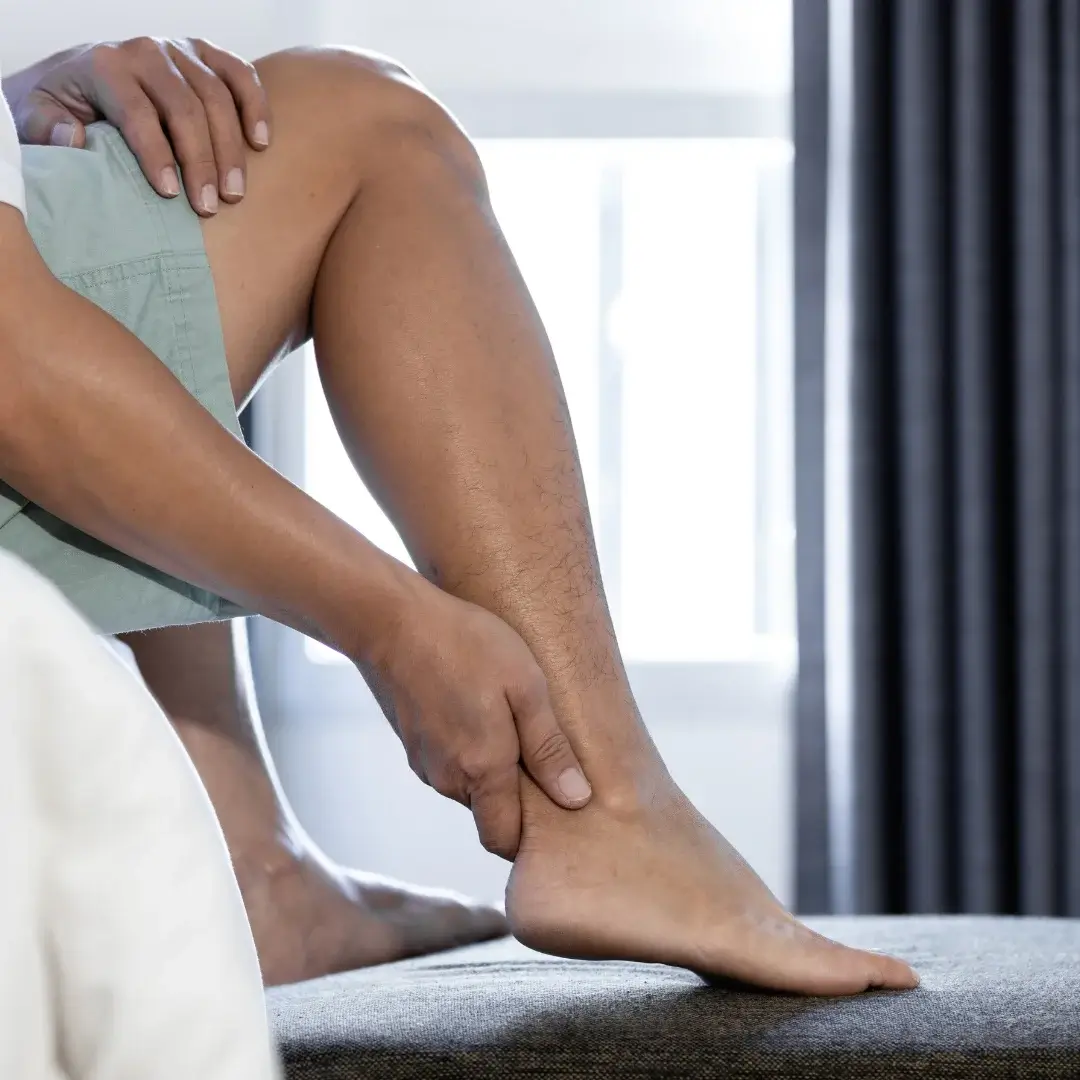Overview:
Achilles tendinitis refers to inflammation and irritation of the Achilles tendon, the large tendon connecting the calf muscles to the heel bone. This condition commonly occurs in individuals who engage in activities that place repetitive stress on the Achilles tendon, such as running, jumping, or sports involving sudden stops and starts. Achilles tendinitis can range from mild discomfort to severe pain, affecting mobility and activity levels if left untreated.
Anatomy:
The Achilles tendon, also known as the calcaneal tendon, is the largest and strongest tendon in the human body. It plays a crucial role in facilitating movement, allowing the calf muscles to propel the body forward during walking, running, and jumping activities. The Achilles tendon attaches to the heel bone (calcaneus) and transmits forces from the calf muscles to the foot.
Causes:
Several factors can contribute to the development of Achilles tendinitis, including:
- Overuse or Repetitive Stress: Engaging in activities that involve repetitive movements of the ankle, such as running or jumping, can strain the Achilles tendon and lead to inflammation.
- Sudden Increase in Activity: Rapidly increasing the intensity, duration, or frequency of exercise without proper conditioning or gradual progression can overload the Achilles tendon and predispose individuals to injury.
- Tight Calf Muscles: Reduced flexibility or tightness in the calf muscles can increase strain on the Achilles tendon during physical activity.
- Improper Footwear: Wearing footwear that lacks adequate support or cushioning, or shoes with worn-out soles, can contribute to abnormal biomechanics and place excessive stress on the Achilles tendon.
- Biomechanical Factors: Abnormal foot mechanics, such as overpronation (excessive inward rolling of the foot) or high arches, can alter the distribution of forces along the Achilles tendon and increase the risk of injury.
Symptoms:
Signs and symptoms of Achilles tendinitis may include:
- Pain and stiffness along the back of the heel or lower calf, particularly upon waking or after periods of rest.
- Tenderness and swelling in the affected area, often accompanied by warmth or redness.
- Pain that worsens with physical activity, particularly during activities that involve pushing off or jumping.
- Thickening or enlargement of the Achilles tendon, especially in chronic cases.
- Decreased range of motion and flexibility in the ankle joint.
Treatment:
Treatment for Achilles tendinitis aims to alleviate pain, reduce inflammation, and promote healing of the affected tendon:
- Rest and Activity Modification: Limit or avoid activities that exacerbate symptoms, such as running or jumping, and opt for low-impact exercises like swimming or cycling to maintain cardiovascular fitness.
- Ice Therapy: Apply ice packs to the affected area for 15-20 minutes several times a day to reduce pain and swelling.
- NSAIDs: Over-the-counter nonsteroidal anti-inflammatory drugs (NSAIDs) such as ibuprofen or naproxen may help relieve pain and inflammation.
- Calf Stretching Exercises: Perform gentle stretching exercises for the calf muscles to improve flexibility and reduce tension on the Achilles tendon.
- Orthotic Devices: Use supportive orthotic inserts or heel lifts in footwear to provide cushioning and reduce stress on the Achilles tendon.
- Physical Therapy: A physical therapist can prescribe tailored exercises to strengthen the calf muscles, improve ankle stability, and address biomechanical issues contributing to Achilles tendinitis.
- Eccentric Strengthening: Eccentric exercises, which involve lengthening the Achilles tendon under tension, have been shown to be effective in treating Achilles tendinitis.
- Extracorporeal Shock Wave Therapy (ESWT): ESWT uses high-energy shock waves to stimulate healing of the Achilles tendon and may be beneficial for chronic cases that do not respond to conservative treatment.
Prevention:
To prevent Achilles tendinitis and reduce the risk of recurrence, consider the following preventive measures:
- Gradually increase the intensity, duration, and frequency of exercise to allow the Achilles tendon to adapt and strengthen over time.
- Wear supportive footwear with proper cushioning, arch support, and shock absorption during physical activity.
- Incorporate regular calf stretching and strengthening exercises into your fitness routine to improve flexibility and reduce strain on the Achilles tendon.
- Avoid sudden changes in activity levels or training intensity, and allow adequate time for rest and recovery between workouts.
- Address biomechanical issues or foot abnormalities through orthotic devices or footwear modifications to promote proper alignment and reduce stress on the Achilles tendon.
Outlook/Prognosis:
With appropriate treatment and adherence to preventive measures, the outlook for individuals with Achilles tendinitis is generally favourable. Most individuals experience significant improvement in symptoms with conservative measures such as rest, physical therapy, and activity modification. However, it may take several weeks to months for symptoms to fully resolve, and patience is essential during the healing process. If symptoms persist or worsen despite conservative treatment, consult a healthcare provider for further evaluation and management.

